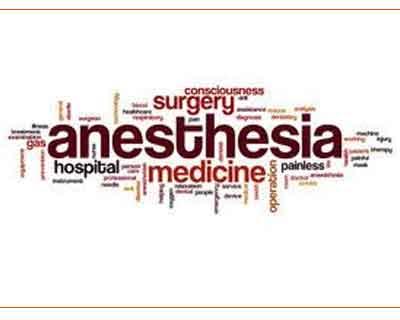- Home
- Editorial
- News
- Practice Guidelines
- Anesthesiology Guidelines
- Cancer Guidelines
- Cardiac Sciences Guidelines
- Critical Care Guidelines
- Dentistry Guidelines
- Dermatology Guidelines
- Diabetes and Endo Guidelines
- Diagnostics Guidelines
- ENT Guidelines
- Featured Practice Guidelines
- Gastroenterology Guidelines
- Geriatrics Guidelines
- Medicine Guidelines
- Nephrology Guidelines
- Neurosciences Guidelines
- Obs and Gynae Guidelines
- Ophthalmology Guidelines
- Orthopaedics Guidelines
- Paediatrics Guidelines
- Psychiatry Guidelines
- Pulmonology Guidelines
- Radiology Guidelines
- Surgery Guidelines
- Urology Guidelines
Combine dental, medical procedures to safely limit children's anesthesia exposure:

Children who require both dental and non-dental medical procedures should have them completed under one general anesthesia session whenever possible, which is ideal for both the patient and family, suggests research being presented at the Anesthesiology® 2016 annual meeting.
"While surgery and anesthesia are safer than they've ever been, limiting exposure is preferable, especially in children, because there may be sensitivities or a greater risk of anesthesia-related complications," said Vidya T. Raman, M.D., lead author of the study and director of pre-admission testing at Nationwide Children's Hospital and clinical associate professor at The Ohio State University Medical Center, Columbus. "In addition to improving patient safety, we believe combining procedures decreases costs and improves patient satisfaction."
Every year, millions of children require surgery for dental and non-dental medical procedures. Some children require general anesthesia when undergoing restorative dental procedures, such as teeth extraction or capping. The researchers say that, when possible, these procedures should be performed in combination with other surgical interventions requiring general anesthesia, such as tonsil removal, insertion of ear tubes and diagnostic tests such as magnetic resonance imaging (MRI), which requires sedation to ensure the child doesn't move. This enables the child to undergo multiple procedures in one visit rather than over several weeks or months.
In the study, 55 children had a dental procedure combined with another non-dental medical procedure under one anesthetic. Nearly nine in 10 (87 percent) did not experience any complications. Seven (13 percent) had complications such as vomiting, pain, fever and pneumonia and of those, four (7 percent) required unplanned admission to the hospital. Most of those patients were at increased risk of hospitalization because of severe systemic disease, said Dr. Raman. Additionally, combining procedures saved an average of 30 percent, leading to a savings of approximately $165,000 for 55 cases, researchers determined.
Electronic medical records house all of a patient's health information and help doctors identify the various recommended procedures that can safely be performed at the same time, Dr. Raman said. It is important that everyone involved dentists, physicians and parents be aware of all upcoming surgeries a child is scheduled for and communicate this with all parties. Some procedures are more urgent or vital, and should be performed first and should not be combined for safety reasons, such as procedures with an increased infection risk, spinal fusion and heart surgeries, she said.
"It can be logistically complex to schedule several procedures at once, but combining them can decrease costs and pleases parents because their children don't have to undergo multiple recoveries, and can return to school and activities faster," said Dr. Raman.

Disclaimer: This site is primarily intended for healthcare professionals. Any content/information on this website does not replace the advice of medical and/or health professionals and should not be construed as medical/diagnostic advice/endorsement or prescription. Use of this site is subject to our terms of use, privacy policy, advertisement policy. © 2020 Minerva Medical Treatment Pvt Ltd